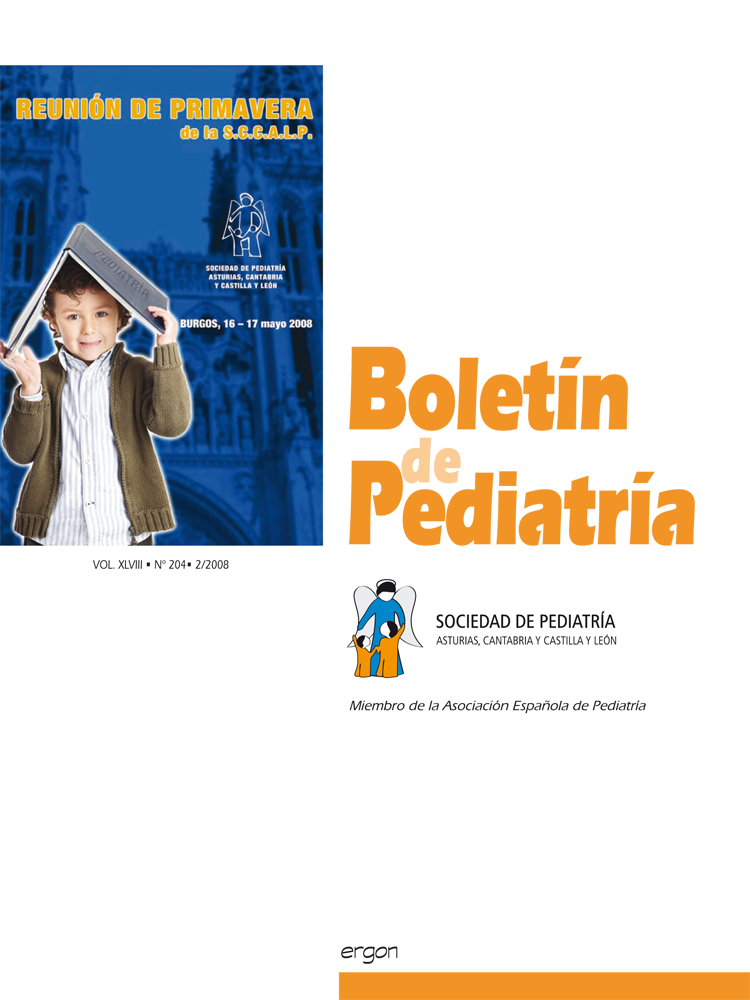Abstract
Introduction: Celiac disease is an immune-mediated enteropathy trigged by the consumption of gluten proteins. The clinical expressiveness is variable; with many gastrointestinal symptoms (classic disease), few and frequently extragastrointestinal symptoms (oligosymptomatic) or with no symptoms at all (silent disease).
Objectives: To examine the clinical and analytical presentation characteristics of the children with celiac disease diagnosed in our province and its evolution six and twelve months later.
Patients and methods: Medical record review of children with celiac disease diagnosed by duodeno-yeyunal biopsy in our hospital between January 2003 and December 2005. Results: 40 patients were identified (5/1.000 alive newborns); 14 boys (35%) and 26 girls(65%). Median age was 3.5 years (range 10 months to 13 years) 47.5% classic disease, 40% oligosymptomatic and 12.5% silent disease were found. The evolution with gluten free diet was excellent in every case.
Conclusions: The celiac disease incidence and the clinical features in our province are similar to the rest of Europe. In the last years there has been an increase of the disease, mainly due to the rise of the oligosymptomatic and silent forms.

This work is licensed under a Creative Commons Attribution-NonCommercial 4.0 International License.
Copyright (c) 2008 Boletín de Pediatría
